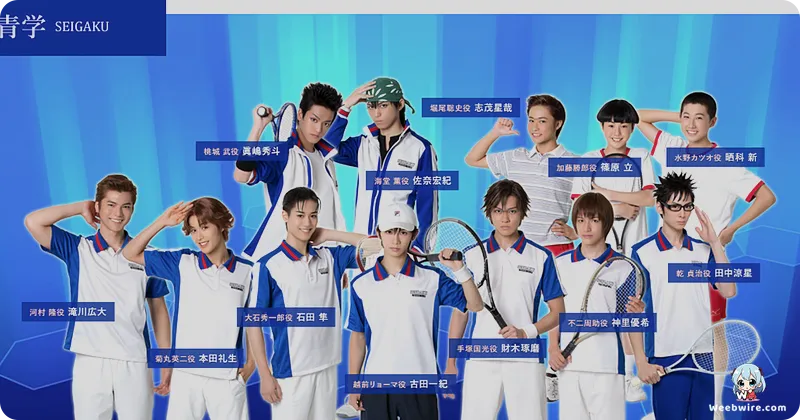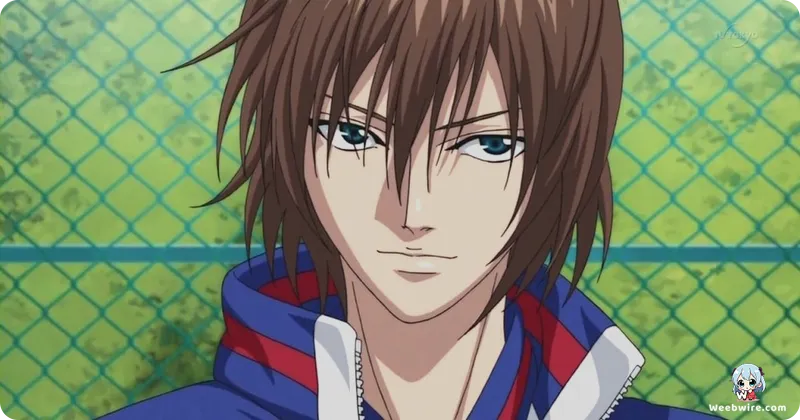Two Decades On: The Enduring Cultural Impact and Untold Stories Behind 'The Prince of Tennis'

Exploding onto the scene in October 2001, The Prince of Tennis swiftly captivated audiences, establishing itself as a seminal work in sports anime. Beyond its renowned blend of athletic prowess and increasingly fantastical tennis matches, a deeper exploration reveals a wealth of intriguing facts and behind-the-scenes narratives that illuminate its enduring legacy and singular position within anime history.
The Creator's Personal Journey
At its heart, the series is a testament to the personal journey of its creator, Takeshi Konomi. Before bringing the legendary manga to life, Konomi was a dedicated and competitive tennis player himself. This intimate connection infused the early chapters with an authentic realism and a profound grasp of the sport's fundamentals. While the narrative famously transcends into a realm where tennis shots defy the very laws of physics, this initial, grounded portrayal provided a credible launchpad for its more extravagant spectacles.
Fans often marvel at the sheer inventiveness behind iconic moves such as Ryoma Echizen's "Twist Serve," Shusuke Fuji's "Triple Counter," or Kunimitsu Tezuka's "Zero-Shiki Drop," yet it was the meticulous detail in the initial depiction of tennis that truly set it apart. The series masterfully navigates a fine line, balancing genuine athletic strategy with the exhilarating impossibility of its signature techniques, transforming each match into a high-stakes, almost supernatural duel.

Evolution of Fantastical Techniques
The evolution of these techniques is a fascinating chapter in itself. What began as advanced tennis maneuvers gradually escalated into visually stunning, often over-the-top special abilities that became synonymous with the franchise. This progression not only continually heightened the stakes but also became a beloved source of humor and fervent discussion among its devoted fanbase. The series never shied away from embracing its own burgeoning absurdity, which, paradoxically, only deepened its charm and distinct identity. This willingness to push narrative boundaries made every new opponent and their unique "tennis superpower" an eagerly anticipated event.
A Vibrant Cast and Dedicated Fanbase
Beyond the court, The Prince of Tennis cultivated an incredibly vibrant and dedicated fanbase, largely due to its expansive and diverse cast of characters. From the stoic captain Kunimitsu Tezuka to the enigmatic Shusuke Fuji, the flamboyant Keigo Atobe, and, of course, the prodigious protagonist Ryoma Echizen, each character was meticulously crafted with distinct personalities, intricate backstories, and signature styles. This rich character development fueled fervent engagement in popularity polls, which often became significant events in their own right, reflecting the deep emotional connection fans forged with their favorite players. These polls frequently saw unexpected characters rise to prominence, showcasing the broad appeal across the ensemble.
The Groundbreaking Tenimyu Musical
A monumental cultural phenomenon born from the franchise is The Prince of Tennis Musical, affectionately known as Tenimyu. This groundbreaking 2.5D musical adaptation, where live actors embody anime characters, commenced in 2003 and has since become one of Japan's longest-running and most successful stage productions. Tenimyu has been instrumental in launching the careers of numerous prominent actors, including Mamoru Miyano, Yu Shirota, and Kensho Ono, who have gone on to achieve widespread fame across various entertainment fields. The musical's incredible longevity, rotating casts, and dedicated following are a testament to the characters' enduring appeal and the franchise's remarkable adaptability across different media. It stands as a prime example of how a popular anime can transcend its original medium to forge entirely new forms of cultural expression.
Voice Acting Excellence and Character Songs
The anime's voice acting roster also presents a captivating array of trivia. Production I.G assembled an all-star cast, many of whom were rising talents destined to become industry legends. Junko Minagawa's iconic portrayal of Ryoma Echizen, perfectly capturing his cool demeanor and underlying passion, remains instantly recognizable. Similarly, Ryotaro Okiayu's commanding voice for Tezuka and Yuki Kaida's serene yet powerful performance for Fuji are integral to their characters' identities. The sheer talent involved imbued the characters with incredible depth and charisma, resonating even more profoundly with audiences. Furthermore, the franchise is celebrated for its prolific output of character songs, with countless albums and singles released over the years. These songs are far more than mere tie-ins; they often delve into the characters' inner thoughts, aspirations, and even their signature tennis moves, providing fans with an additional layer of connection and insight.
The Art of Blending Comedy and Competition
While primarily categorized as a sports anime, The Prince of Tennis is also unexpectedly rich in comedic elements. Much of this humor stems from the exaggerated reactions of characters, the intense rivalries that frequently spill into absurd situations, or the sheer, undeniable silliness embedded within some of the tennis matches and training regimens. This masterful blend of serious athletic competition with lighthearted, often self-aware comedy is a crucial ingredient in its broad appeal, ensuring that even when the stakes are at their highest, there’s always room for a genuine chuckle.
An Enduring Legacy and Cultural Impact
The influence and longevity of The Prince of Tennis are indisputable. For over two decades, the franchise has consistently expanded, encompassing multiple manga series (including New Prince of Tennis), numerous anime adaptations, OVAs, movies, games, and, of course, the enduring musicals. Its ability to maintain relevance and attract new generations of fans speaks volumes about its unique formula and the timeless appeal of its core themes: unwavering hard work, profound friendship, fierce rivalry, and the relentless pursuit of excellence. It not only entertained but also played a pivotal role in popularizing the sports anime genre, showcasing its immense potential for deep character exploration and captivating narratives. The meticulous animation by Production I.G, renowned for its high-quality productions, particularly in action sequences, was instrumental in bringing the dynamic tennis matches and the characters' distinctive styles vividly to life. Their work established a visual benchmark, making every special move feel impactful and spectacularly visual.
In essence, The Prince of Tennis transcends being merely a tennis anime; it is a profound cultural phenomenon built upon a foundation of genuine sports passion, imaginative storytelling, unforgettable characters, and a distinctive fusion of drama and humor. Its legacy continues to serve as a powerful testament to the force of creative vision and the enduring bond between a compelling story and its devoted audience, unequivocally proving that even in the world of fantastical tennis, the human spirit of competition and friendship invariably triumphs.
Credits
The Prince of Tennis
Author
Takeshi Konomi
Cover Art
Takeshi Konomi
Studio
Production I.G
Publisher
Shueisha





